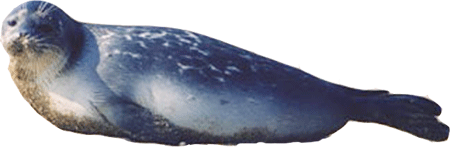Caspian Seal

Common Name: Caspian Seal
Scientific Name: Pusa caspica
Description
Caspian seals is one of the negligible members of the "true seal" family, are different in that they are found entirely in the brackish Caspian Sea. They are dark grey coloured and they have light coloured spots on its body. They can be originating not only along the shorelines, but also on the numerous rocky islands and balanced blocks of ice that dot the Caspian Sea. In winter, and cooler parts of the spring and autumn period, these marine mammals inhabit the Northern Caspian. As the ice dissolve in the warmer period, they can be found on the jaws of the Volga and Ural
Size
Caspian Seals have a length of the body between 1.4 and 1.8 m (4.6 - 5.9 ft) and they weight between 50 and 86 kgs (110 - 190 lbs).
Habitat
Caspian Seals are originating in the Caspian Sea.
Diet
Caspian Seals are mainly eaten fish and crustaceans.
Breeding
After a growth period of 11 months, Caspian Seals give birth to only a single pup. They are weaned by the time they arrive at a month old and they reach sexual adulthood at 5 - 7yrs of age.s
Predators
Predators of Caspian Seals comprise sea eagles and humans.
Subspecies
Caspian Seals contain no subspecies.
 Deep Sea Crabs
Deep Sea Crabs